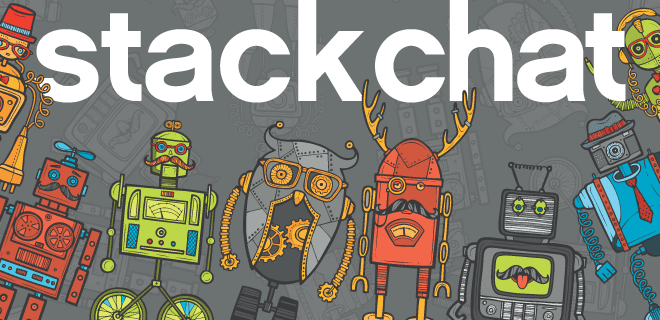
“The good thing is that we are on a vendor stack,” commented Ricardo Collison, VP of Revenue Platforms for CBSi. “The bad thing is that we are on a vendor stack.”
A digital totem pole built out of a mishmash of mismatched pieces, the revenue tech stack stands in the center of the ad operations village, enabling the ads and revenue to flow. While every ops pro toils with the looming fear that the pile will come crashing down and bring the revenue machine to a deadly halt, on a day-to-day basis they are more concerned with optimizing the components, connections and processes to not only increase productivity, but also drive additional revenue.
Which is why attendees at the Publisher Forum and other AdMonsters events often huddle together and ask each other, “Who are you working with? What’s in your stack?”
Alas, there is no one perfect tech stack – each publisher will have its own ideal setup, and that notion of ideal will change over time with trends, new products, channels and devices. Even when various publishers are tooling with the same components from the same providers, nuances in processes, connections and overall order can make a world of difference to operations. Stack chat is essential for understanding the options out there and evaluating your own setup.
So we asked Ricardo Collison and Lee Barstow, VP of Digital Ad Operations at A&E, if they wouldn’t mind if we dropped in on their stack chat and took some notes to distribute. The two broadcasters shared diagrams of their tech stacks (sadly, we can’t share those with you), and then gathered on a conference call to comment on the similarities and differences between the two.
Barstow noted he was tinkering with his tech stack as we spoke – “I’m always fixing it!” he joked. “I feel like for the five years I’ve been in this position, all I’ve been doing is moving stuff around to get the right pieces in place.”
The task goes on – will it ever really be finished?
 Similar Appearances, But on Closer Inspection…
Similar Appearances, But on Closer Inspection…
As both are broadcasters, it wasn’t surprising that the rival stacks bore more than a passing resemblance, both in terms of the pieces in play and the order in which they interoperate. Video is the primary revenue concern for both companies, but the variances in approach to this channel appear in the nuances of the tech stacks.
As VP of Revenue Platforms and Strategy, Collison’s purview is over the whole tech stack, from orders in to cash process. The shared stack is predominantly for the CBS Interactive properties – though occasionally it is used for CBS holdings, such as radio and television distribution. The stack stretches across desktop, video and mobile Internet, as well as mobile apps, lead generation, content solutions.
At the top of the stack is the CRM system, SalesForce, which feeds into the order management system (OMS), Operative. The OMS then shoots out to the integrated ad server (DoubleClick for Publishers), which is used for display, video and mobile. Plugged into the ad server are supply-side platforms (SSPs) for display and video, as well as direct links to exchanges. The OMS also feeds into Oracle for billing. There are also other vendor tools that interoperate with the core stack like Moat, The Media Trust, Adjuster, YieldEx and others.
In the last few years, CBSi has switched from systems primarily built in-house to third party offerings. In building this new tech stack, Collison had three primary aims: standardization, enhanced data control and interoperability. The latter is the most important: can the pieces interoperate with other platforms in place and does the change create opportunity for further efficiencies down the road? The key is to do this without disruption to the business or dropping any revenue on the floor and in turn future proofing the business.
“Unless there is a very, very good reason why, I try never to work with a vendor without an API that I can pull data from, ingest into a repository, and use for analytics to drive business decisions,” Collison said.
A&E has not had such a stringent policy on APIs, notably because APIs and their updates can become cumbersome, Barstow explained. While data circulation is advantageous and important for A&E, keeping up to date with API updates and upgrades can slow down the stack. Collison agreed this can cause problems when constantly and dynamically pulling data into a variety of systems. Over-reliance on the timely availability of third-party data can easily throw a wrench in the works.
Barstow said that his role is similar to Collison’s in terms of finding monetization technologies and solutions that make sense across all of A&E’s brands, but the particular ones he’s focused on are A&E, History, Lifetime, H2, the Lifetime Movie Network (LMN) and the recently launched FYI.
A&E’s tech stack supports all of those elements: “We want that single view of the customer across, no matter how they interact with us digitally – whether that’s the sites, the mobile web, the watch applications and over-the-top,” he said. “Now we’re also into set-top box video-on-demand.”
Unlike CBSi, A&E’s order management system (Operative) is up front, instead of the CRM. Barstow noted the company hasn’t seen the scale of business to warrant plugging their CRM system into Operative, though they are evaluating the possibility. Operative is also the company’s resource for planning and inventory management.

From there, the OMS is plugged into the ad servers in the middle – DFP for display, FreeWheel for video. These overlay into a single content management system (CMS) across all A&E platforms and devices – including video player variations that depend on where the player is located – and an Adobe/Omniture analytics package (including Heartbeat for video) is hooked into the entire system.
One Ad Server or Two?
“A few years ago, life was simple – mainly desktop, a little mobile web,” Barstow said. “Now you’ve got multiple viewing applications and screens, and several new devices on the OTT side of the house, iOS and Android platforms along with various points of distribution through cable, satellite and telco partnerships.”
These ever-changing forces were the central motivation in A&E adding FreeWheel as its video ad server. Video is the majority of the company’s revenue, and therefore A&E sought out a best-in-breed solution. FreeWheel proved able to manage the complexity of A&E’s distribution.
At the same time, the flexibility of A&E’s OMS eases the chore of managing multiple ad servers. A single IO is pushed into Operative, which communicates with both ad servers and splits display and video lines into their proper homes. Collison mentioned that maneuverability with multiple business units was also essential in choosing an OMS – particularly considering their lead-gen and content solutions.
However, standardization and interoperability were two chief concerns for CBSi, so the company decided on a single ad server (DFP) for multiple channels for the inherent synergies that come with a unified platform. DFP has proved stable and up to the tasks CBSi appoints it, and having only one server has increased efficiencies while not limiting the company’s offerings.
“We were striving for standardization and to limit operational overhead,” Collison said. Going with a single ad server “was a calculated gamble that we took, and the gamble paid off. It could have gone completely sideways.”
Even though the two-server works are humming along, Barstow suggests in the longer term a single ad serving solution may be in the cards. At the same, Collison mentioned that while display and mobile ad server migrations are no cakewalk, a video ad server migration is a beast of a different color. A switch might not be worth the time, money and effort involved.
Streaming and Stitching
The newest jewel in CBSi’s crown is an all-access subscription streaming video service optimized for consumer use on all devices. However, Collison reported that finding the right partner for video stitching – hasn’t been the easiest process.
“There have been a lot of challenges on the stream-stitching side,” Barstow agreed. “Basically, we’ve walked pretty slowly there.”
The two traded stories about trying out various vendors. Collison noted that CBSi had a lot of internal knowledge on back-end stitching and encoding which made it difficult to find a provider up to the task. CBSi was advanced on this front and knew exactly what it wanted.
Barstow commented that for on-demand video to date, A&E has only added stream stitching where it’s a business requirement (for example, within the AppleTV app). The company is not currently doing dynamic ad insertion in live linear video feeds.
Keeping Up With the Market
Speaking of streaming video, A&E’s streaming video partner (MDialog) was recently acquired by Google. Consolidation has also claimed two more of A&E’s heavily used service providers: Facebook acquired LiveRail and Comcast bought FreeWheel.
So what does that mean for A&E’s stack and its business on the whole? Does it expose the company to risk? And to Collison’s objective of owning all the data throughout the stack, how will these acquisitions affect data integrity? The answers are still to come.
Even without M&A, keeping up with service providers is a challenge itself, perhaps a full-time job in addition to stack administration. Collison and Barstow must have a bead on the product roadmaps of a variety of partners, and then keep their teams and larger organization abreast of developments.
“We’re in a world now where we’re supporting 20-plus platforms, devices and points of distribution with about 70-80 different instances,” Barstow says. “That will probably double in the next 12-18 months as more distribution deals get in place…”
As stack curators, it’s in their job description to be on top of the latest trends – e.g., viewability, terms and conditions, data sharing with advertisers, data protection, etc. – as well as how technology players are addressing them.
“I think I’ve been traveling for the past three months attending summits, QBRs and talking to vendors and industry experts whenever I get a chance to in order to understanding what’s happening in the market,” Collison says. “That’s a necessary evil if you want to stay informed of all the change happening in the market and solutions that are presenting itself.”
Convergence Happening?
Though it doesn’t affect their every move, the digital arms of broadcasters always are on the lookout for signs of the convergence of linear and digital, in terms of both revenue and technology.
Convergence between the web and TV makes sense, Barstow adds, but it’s a ways away from a technical solutions perspective. And it’s important to keep in mind that linear television is a seventy year old business with has evolved slowly over many years (consider the adoption of high-definition). At the same time, Barstow is trying to predict where the technology will be five to ten years from now, while examining where the digital-linear convergences seem to be occurring – from on the front end with OTT to back-end operations and planning.
At this year’s inaugural Media Finance Summit (to be held in August 2015 in Charleston), Collison was encouraged by a conversation he had with a representative from a multi-service operator (MSO). Currently, this company is exploring how to pull their linear business into their digital OMS. Such a move to a single OMS could signal a true starting point for digital and linear revenue convergence.